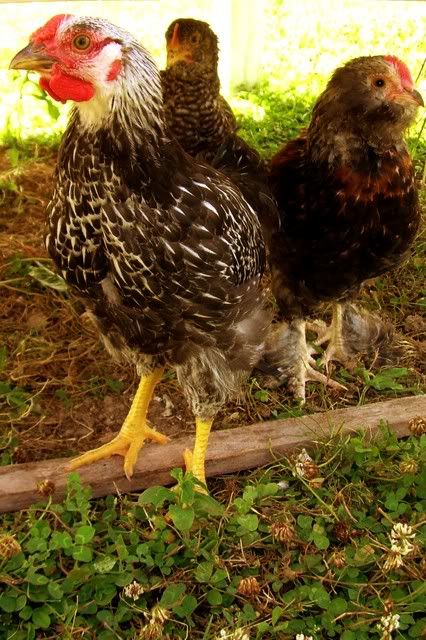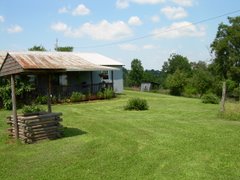I find I've been rather busy with the chicks, the cockerels, the goats, the cats, the budgies, the fish... and so forth. I've taken pictures, but somehow I procrastinate uploading and blogging. It's much more fun to spend time with the animals than it is to type stories about spending time with the animals. Now, though, I find I have a little time to sit at the laptop while lunch is baking: a nice venison stroganoff. Mmm.
The two Ameraucanas I purchased from StormStryder poultry as eggs are my favorite chickens. They're so friendly, they'll direct affection more or less at anyone within their line-of-sight. Most of the Faverolles, again, turned out to be cockerels--I finally ordered some sexed pullets from a commercial hatchery, which rather goes against my grain, but at least I'll be assured of some laying hens.
Out of the nine that hatched, I got the two Ameraucana pullets and one Faverolles pullet. There is also a Silkie whom I've named Sylvia. However, Silkies are almost impossible to sex, even by experienced breeders. She seems to act hennish, and her crest seems to have the right shape for a female, but many-a-person has been fooled.

She's a quiet little thing, half as big as our largest, but she doesn't seem to get picked on. Because of the unusual feathering, Silkies are unable to fly. Lily and Galatea (the two Ameraucanas) easily fly up to one's shoulder and settle for a comfortable visit.
This is Lily doing just that:
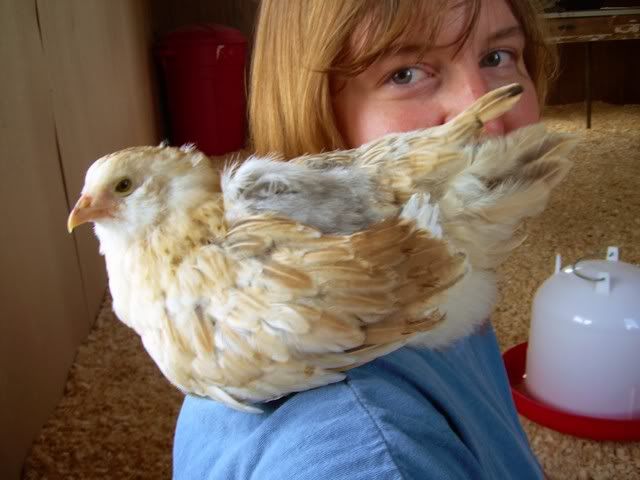
My Ameraucanas are Wheatens--that is, "Wheaten" is their color pattern. The breeder I bought from, however, breeds Blue Wheaten birds. Because of the genetics of the blue coloring, the birds can produce Wheaten, Blue Wheaten and Splash wheaten from the same pairing, so to be quite honest, I'm not sure what I have. The roosters are somewhat easier to differentiate as far as their color goes.
Lily's feathers are a light buff, with white lacing, and some of her feathers are white again in the center, as if they're double-laced. The underfluff on her back is slate grey while elsewhere it is white, and there are even some spots of grey on the ends of the feathers toward her tail, very subtle, almost a barring. She's terribly beautiful.
Her sister Galatea is lighter in color, with golden or yellow feathers on her back. All Galatea's underfluff is white, very pretty. In the photo of all the pullets together, below, you can probably see the difference in color. Lily is on the left; commanding her attention is Mathilde, the Faverolles pullet. Behind them, you can see Galatea and Sylvie. Notice the blue legs of the Ameraucanas.
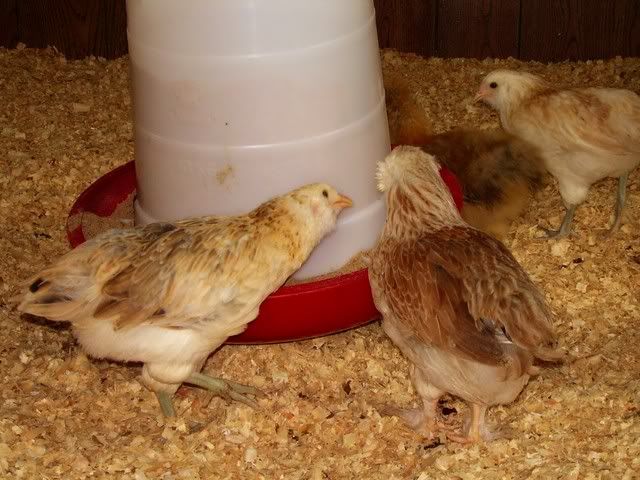
Most chicken breeds have yellow or white (actually flesh colored) legs, but the Ameraucanas have this attractive blue (called "slate"). Silkies actually have black feet, to go with their black skin.
Henry--once known as Henrietta, named in a fit of wishful thinking and impatience--seems to always dribble his water down his little beard, and then get grumpy.
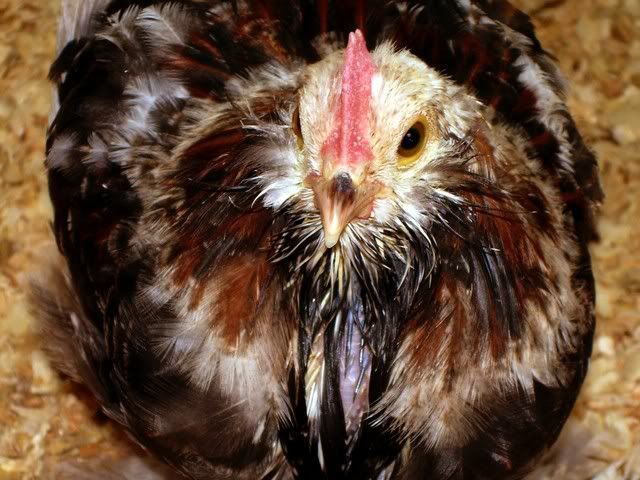
Mathilde isn't nearly as friendly as the other Faverolles I have, but she's is still quite lovely--and funny-looking, too, especially when she settles down and fluffs her feathers. She rather looks like an egg. Her fluffy beard nearly obscures her eyes from the front.
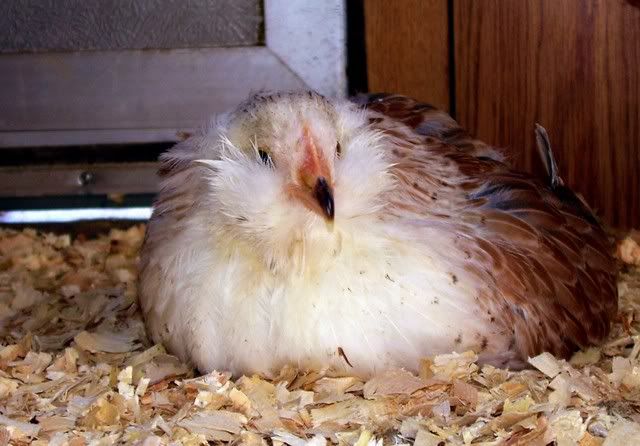
Jean-Jacques is getting big, and Franklin (once named Fanny) has begun to crow. Even Alan thinks the sound is cute: it sounds like a cross between and owl and a mourning dove. "Whooorrrr? Wrrrr..."
